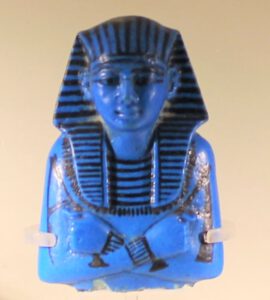 The 18th century sees an increase in scientific knowledge and practical research. Many findings have a direct impact on everyday life, craft and commerce. New technics allows, e.g., to create new colours. Find out here what Napoleon’s Campaign in Egypt, the Prussians and an apothecary have to do with the various blue pigments created in the long 18th century.
The 18th century sees an increase in scientific knowledge and practical research. Many findings have a direct impact on everyday life, craft and commerce. New technics allows, e.g., to create new colours. Find out here what Napoleon’s Campaign in Egypt, the Prussians and an apothecary have to do with the various blue pigments created in the long 18th century.
Results for Tag: Craft
Interview with a Chandelier
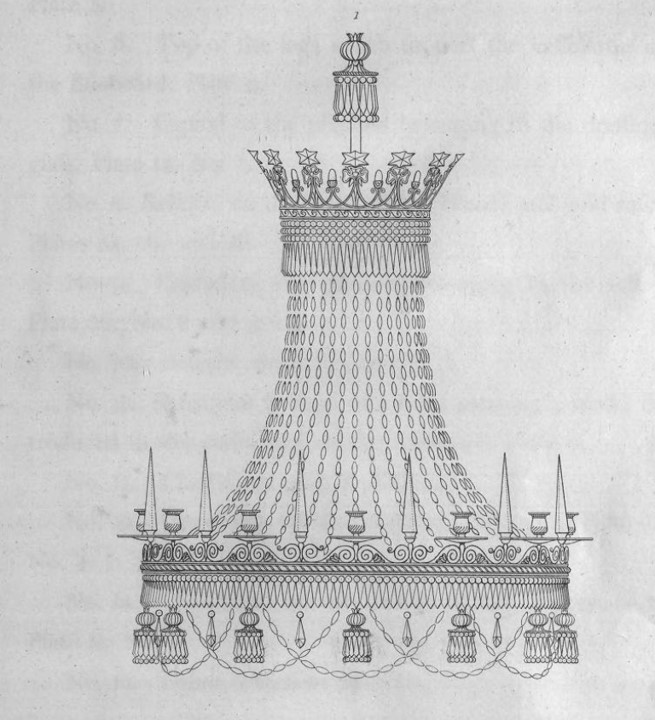
Cut-glass chandeliers were among the most sought-after luxury products of the 18th century. Only the super-rich could afford to buy them. Thus, chandeliers were often designed to match the interior of a room, meaning that they were custom-designed.
Regency Explorer interviews an elegant chandelier from 1815 about the makers, customers, and the influences from fashion, science and politics.
From Education to War Gaming: Tin Toys in the Long 18th Century
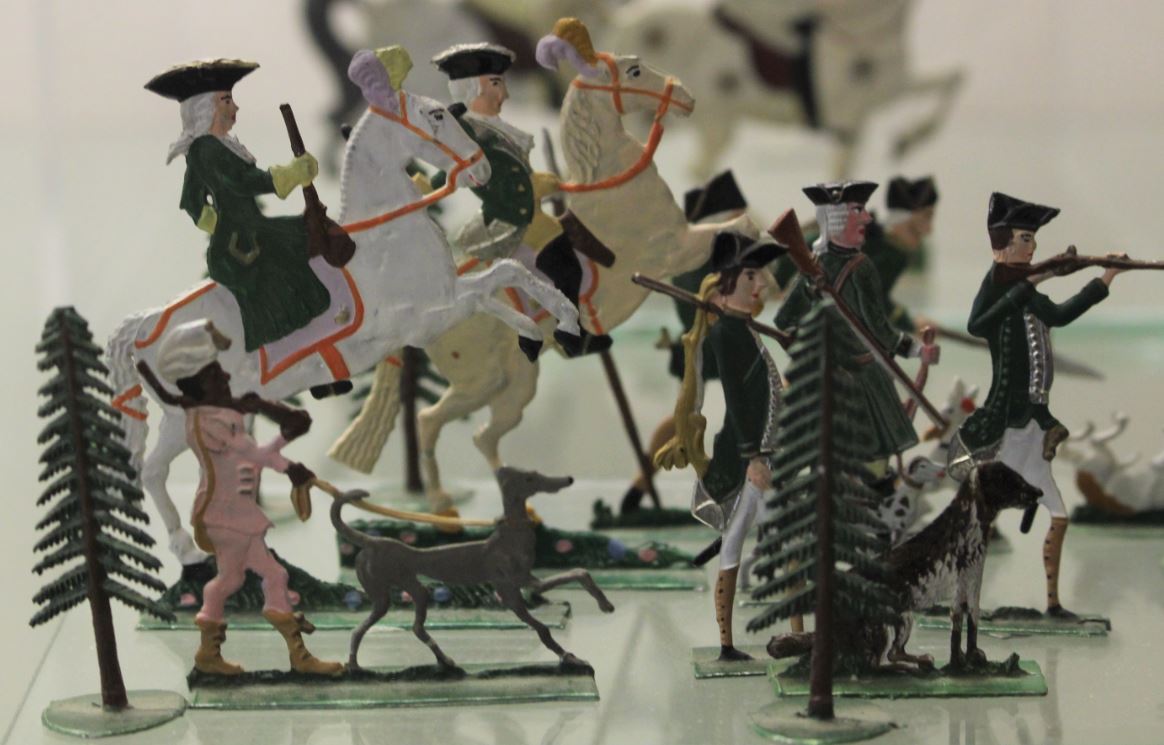 Miniature figures or miniature soldiers in general have been around as talismans or devotional objects for many centuries. However, the ‘modern’ toy soldier – a product explicitly marketed to children to play with – was created in the 18th century in Prussia. The first tin toys were flat, two-dimensional figures. They started as a by-product of the tin-ware production.
Miniature figures or miniature soldiers in general have been around as talismans or devotional objects for many centuries. However, the ‘modern’ toy soldier – a product explicitly marketed to children to play with – was created in the 18th century in Prussia. The first tin toys were flat, two-dimensional figures. They started as a by-product of the tin-ware production.
Object of Interest: The Columbian Printing Press
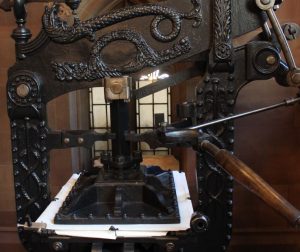 The American engineer George Clymer invented the Columbian printing press in 1813. It was one of the first iron printing presses, and it was in part inspired by the Stanhope press.
The American engineer George Clymer invented the Columbian printing press in 1813. It was one of the first iron printing presses, and it was in part inspired by the Stanhope press.
The Columbian printing press cost $400, more than twice the price of a conventional wooden press – and too much for the American market. So Clymer moved to London in 1817. Here, he made a success of his press-manufacturing business. Continue reading
The Poor Man’s Son Who Usurped the British Market of Optical Lenses
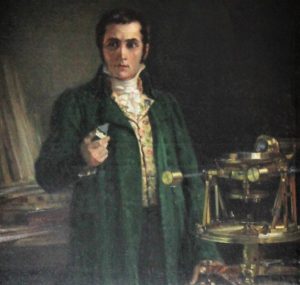 Since the mid-18th century, England had been the centre of the optics industry, due to the work of instrument-maker John Dolland (1706-1761). Dolland manufactured small ‘achromatic’ telescopes with high-quality lenses made of flint glass (instead of the inferior crown glass). His products were in high demand from astronomers all over Europe. This began to change, when a poor man’s son, who had had a lot of bad luck in his youth, met the Bavarian Prince Elector. Continue reading
Since the mid-18th century, England had been the centre of the optics industry, due to the work of instrument-maker John Dolland (1706-1761). Dolland manufactured small ‘achromatic’ telescopes with high-quality lenses made of flint glass (instead of the inferior crown glass). His products were in high demand from astronomers all over Europe. This began to change, when a poor man’s son, who had had a lot of bad luck in his youth, met the Bavarian Prince Elector. Continue reading
Making watercolour-paper as it was done in the Regency period
– A photo story about a traditional craft –
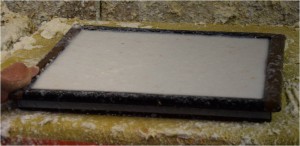 In the Romantic Age as well as today, high-quality watercolour-paper for artists is the so called wove paper ready-sized with gelatine. This paper is still produced at Two Rivers Paper Mill in Somerset, England. I went there to learn more about this traditional craft. You can read about my field trip to their workshop here.
In the Romantic Age as well as today, high-quality watercolour-paper for artists is the so called wove paper ready-sized with gelatine. This paper is still produced at Two Rivers Paper Mill in Somerset, England. I went there to learn more about this traditional craft. You can read about my field trip to their workshop here.
This is how the paper is made:
A Traditional Craft: Making Watercolour-Paper
In this post:
The traditional making of watercolour-paper
Watercolour-painting’s Golden Age
Technical innovations at the service of art
How to use making watercolour-paper or watercolouring in your Regency Novel
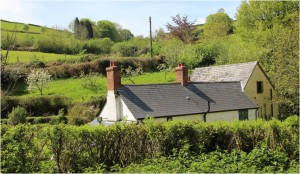 The pleasant village of Roadwater lies a couple of miles behind us, and the small road leads into a forest. We are on a field research trip to Two Rivers Paper Mill in Somerset/UK to learn about the traditional production of watercolour paper. Exploring the Regency period can be exciting – and might include loosing the way. We are about to turn the car, when we see a white building with a black slate roof. It is Two Rivers Paper Mill, built in the 1680ies. In the Georgian era, the mill was a thriving corn mill, known as Pitt Mill. Today, the mill is a centre of the traditional production of a paper that was vital for the latest trend in arts during the Romantic Age: high-quality watercolour-paper.
The pleasant village of Roadwater lies a couple of miles behind us, and the small road leads into a forest. We are on a field research trip to Two Rivers Paper Mill in Somerset/UK to learn about the traditional production of watercolour paper. Exploring the Regency period can be exciting – and might include loosing the way. We are about to turn the car, when we see a white building with a black slate roof. It is Two Rivers Paper Mill, built in the 1680ies. In the Georgian era, the mill was a thriving corn mill, known as Pitt Mill. Today, the mill is a centre of the traditional production of a paper that was vital for the latest trend in arts during the Romantic Age: high-quality watercolour-paper.
Continue reading
A Writer’s Travel Guide to London’s Bookbinding Trade
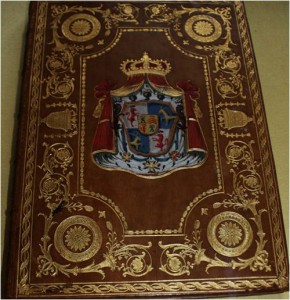 In the Georgian age, the book trade flourished in London. Reading was a popular pastime. Books were often read to friends and family for entertainment. Until the end of the 18th century, newly published books were sold without a binding. A person who bought a book received only the printed paper with temporary sewing, a so-called “board”. He/she would go on to engage a bookbinder to have it bound to match his/her personal library.
In the Georgian age, the book trade flourished in London. Reading was a popular pastime. Books were often read to friends and family for entertainment. Until the end of the 18th century, newly published books were sold without a binding. A person who bought a book received only the printed paper with temporary sewing, a so-called “board”. He/she would go on to engage a bookbinder to have it bound to match his/her personal library.
A bookbinding of high quality would find admirers in highest ranks. Wealthy aristocrats and gentry were affluent enough to order specially designed books for their libraries. Their books collections were made to impress, and so the books had to be bound befittingly. Many quality bookbinding workshops were located in Westminster, in the vicinity of the tailors. Thus, a gentleman could conveniently order a new coat and a binding for a new book in one afternoon.
Continue reading
